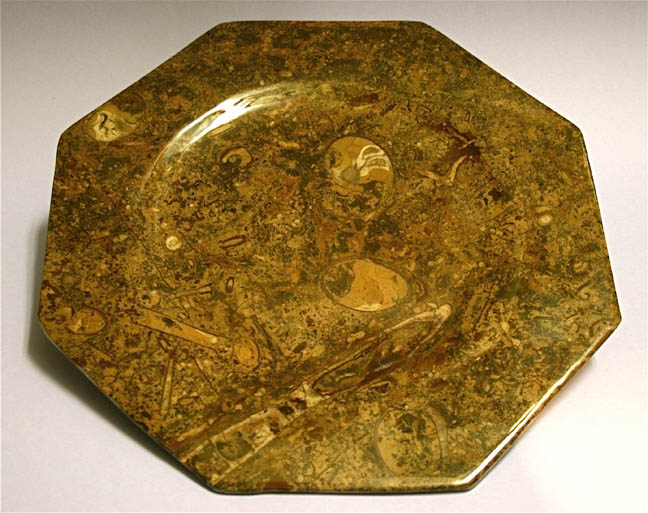

Title: Stone Fossil Orthoceras & Ammonites Serving Platter Plate Dish
Shipping: $29.00
Artist: N/A
Period: Unassigned
History: N/A
Origin: North America > United States
Condition: Museum Quality
Item Date: N/A
Item ID: 1023
This plate is made of fossil stone that is 380 million years old. This should be treated in the same manner as fine china. Since the material used is so unique, no two will ever be the same. Your purchase will be the only one in the world! Every item was carved by hand by a skilled artisan and fashioned as one of a kind. It is no wonder that such difficult and skilled work coupled with the use of rare and genuine fossil-bearing rock is so unique. The Ammonite specimens are scattered throughout each entire piece and appear below as well as above the rim. There is a gorgeous polish and artistic execution to this work! Orthoceras and Ammonites are ancestors of octopus, squid, and the present day nautilus. Each Moroccan Ammonite & Orthoceras dish is completely unique and one-of-a-kind. You will treasure it forever!
Link: http://en.wikipedia.org/wiki/Fossil
Fossils (from Latin fossus, literally "having been dug up") are the preserved remains or traces of animals, plants, and other organisms from the remote past. The totality of fossils, both discovered and undiscovered, and their placement in fossiliferous (fossil-containing) rock formations and sedimentary layers (strata) is known as the fossil record. The study of fossils across geological time, how they were formed, and the evolutionary relationships between taxa (phylogeny) are some of the most important functions of the science of paleontology. Fossils are typically distinguished by minimum age, most often the arbitrary date of 10,000 years ago.[1] Hence, fossils range in age from the youngest at the start of the Holocene Epoch to the oldest from the Archaean Eon several billion years old. The observations that certain fossils were associated with certain rock strata led early geologists to recognize a geological timescale in the 19th century. The development of radiometric dating techniques in the early 20th century allowed geologists to determine the numerical or "absolute" age of the various strata and thereby the included fossils.